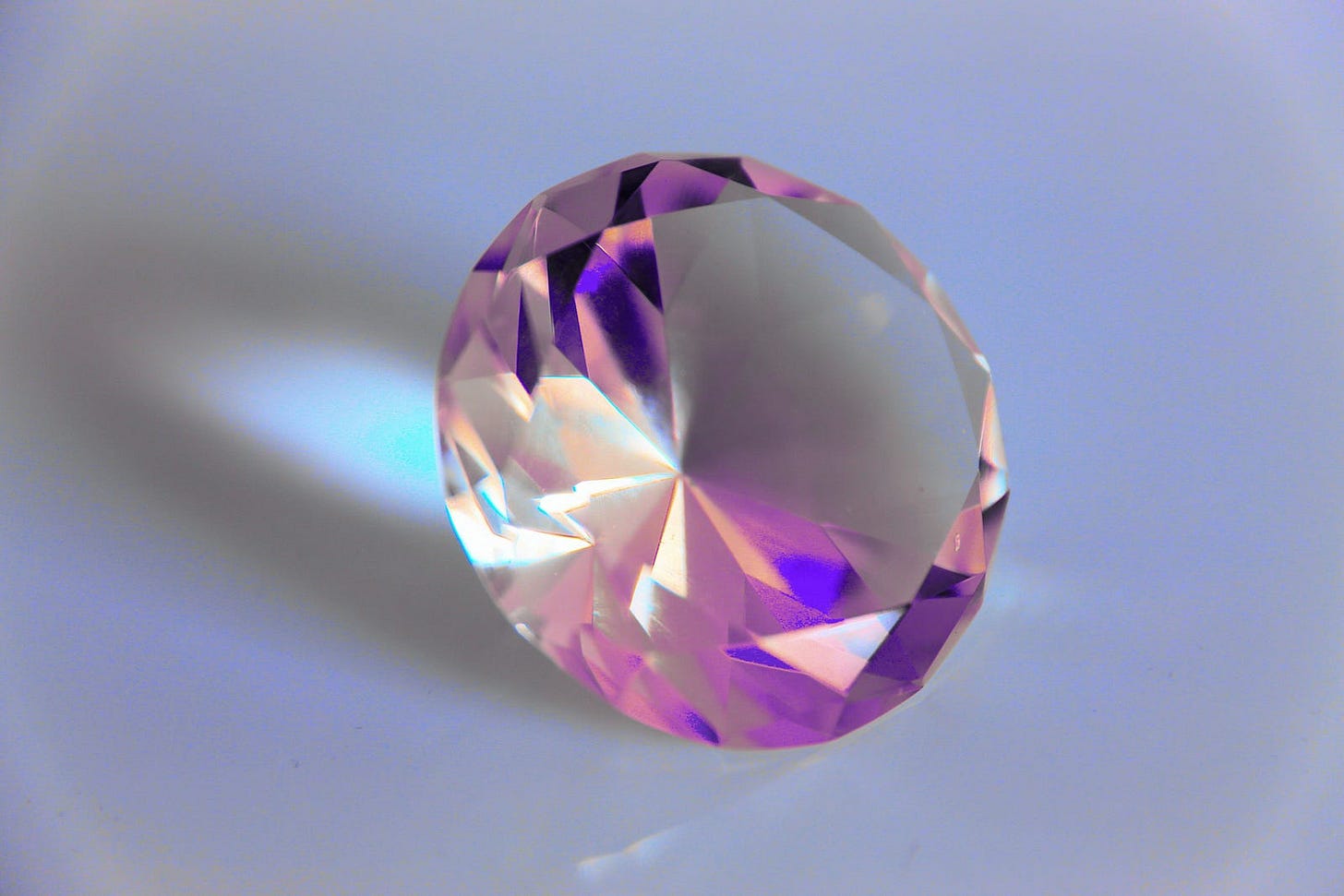Can Diamonds Save The Planet?
Yes, but we don't need them to.

Some climate scientists recently caused a stir when they claimed that diamonds could be the key to stopping climate change and saving the planet. Needless to say, there has been mixed coverage of their findings. But, not only does their suggestion hold a lot of water, we actually have a far more feasible, cheaper, and far better-tested version of this geoengineering that we could implement tomorrow if we wanted.
These scientists started by trying to find a better version of one of the most controversial proposed geoengineering methods known as Stratospheric Aerosol Injection (SAI).
SAI basically mimics volcanic and hypothetical nuclear winters. Volcanic winters happen when a gargantuan volcanic eruption injects huge amounts of microscopic sulfur particles (also known as aerosols) into the upper atmosphere. These particles are highly reflective and stop a significant portion of solar radiation from reaching the lower atmosphere and the ground, which cools the climate. However, these aerosols don’t stay in the atmosphere for long. In fact, sulfur aerosols eventually dissolve into the clouds and fall as acid rain, which can devastate ecosystems.
SAI mimics this to geoengineer the climate by using planes or sounding rockets to take aerosols, typically sulfur, into the atmosphere to cool the planet and mitigate climate change. However, the levels would have to be topped up constantly, which would cost an insane amount. There would also be significant environmental impacts from effects like acid rain and unpredictable changed weather patterns.
Needless to say, SAI is highly controversial.
So, these scientists wanted to find an aerosol that is more efficient at reflecting solar radiation, stays in the atmosphere longer, and is more inert in the environment than sulfur aerosols. By solving these problems, they could turn this potential geoengineering method from controversial to feasible.
So, they developed a 3D climate model and simulated how aerosols made of aluminium, calcite, silicon carbide, anatase and rutile as well as diamond and sulfur hold up. This model would test how much light they would reflect, di they clump up in the atmosphere and how long they will stay in the atmosphere. They then ranked them on which could have the greatest reduction in climate temperature over a period of 45 years, per tonne of aerosol.
Overall, sulfur came in last, while diamond outstripped all the rest.
In fact, they found that 5 million tonnes of diamond aerosols could reduce global temperatures by 1.5 degrees Celsius for a year. That would be enough to mitigate our current predicted overshoot of the Paris Agreement targets.
However, doing this would cost trillions of dollars per year. I have seen some estimates state less. However, they forget to include the cost of getting these diamonds into the atmosphere, as well as the investment and ongoing expenses required to scale up synthetic diamond production.
But either way, there simply isn’t enough money in the world to pay for diamond SAI as a long-term climate solution. And that isn’t hyperbole, the cost is several times more than the predicted GPD of the entire world.
Moreover, we don’t know what the environmental impact of all that microscopic diamond dust would do to ecosystems. Sure, it is tough and inert, but so are microplastics, and they are causing havoc!
But, all hope is not lost. We already have an efficient, cheap, environmentally safe and proven form of geoengineering. Marine Cloud Brightening (MCB).
rather than using chemicals in the upper atmosphere, MCB uses saltwater to seed very bright clouds. MCB starts by spraying a very fine mist of seawater over marine ecosystems. The salt in this spray helps to start and grow very bright white clouds in a similar way to aerosol-cloud seeding. These clouds then grow and rise up in the atmosphere. Clouds reflect an enormous amount of light, and solar radiation, and as such, MCB cools the climate in a very similar way to SAI.
But, we have inadvertently been doing a dirty form of MCB for years and only found out when we enforced international shipping to use clean marine fuels in 2020. Before then, they used high-sulfur fuels, and as such, our ships produced an enormous amount of sulfur aerosols close to the ocean surface. This seeded brighter marine clouds, which cooled the planet.
But, when these clean fuels came about in 2020, this cooling effect was removed, and the global annual average temperature when up by 0.5 degrees Celsius. Now, we can’t prove this temperature increase was solely caused by this fuel switch, but scientists are busy at work understanding the link between the two.
Why? Well, it is incredibly hard to test geoengineering methods without being utterly unethical. Simulations can only be so accurate, and we can never know what other side effects geoengineering can have. What if doing SAI over the Atlantic causes a deadly hurricane? We simply wouldn’t know beforehand, and so it is so hard to develop and prove this technology in time for it to be useful.
However, this isn’t true for MCB, as we have been unwittingly doing a sucessful but dirty version of it for years around the entire globe. We have the climate data to show how it impacts the entire globe’s climate, weather and ecosystems. It is also incredibly cheap, as there are no ongoing material costs or need to mitigate for chemical damage to the environment. We just need to fit giant water-spraying machines on the back of ocean-going ships. Something which could easily do in a few years. As such, it is by far the most feasible geoengineering method we have.
So, there is hope for geoengineering yet. Just not the diamond kind.
Thanks for reading! Content like this doesn’t happen without your support. So, if you want to see more like this, don’t forget to Subscribe and help get the word out by hitting the share button below.
Sources: Daily Galaxy, IFL Science, Universe Magazine, Will Lockett, Will Lockett, Will Lockett

